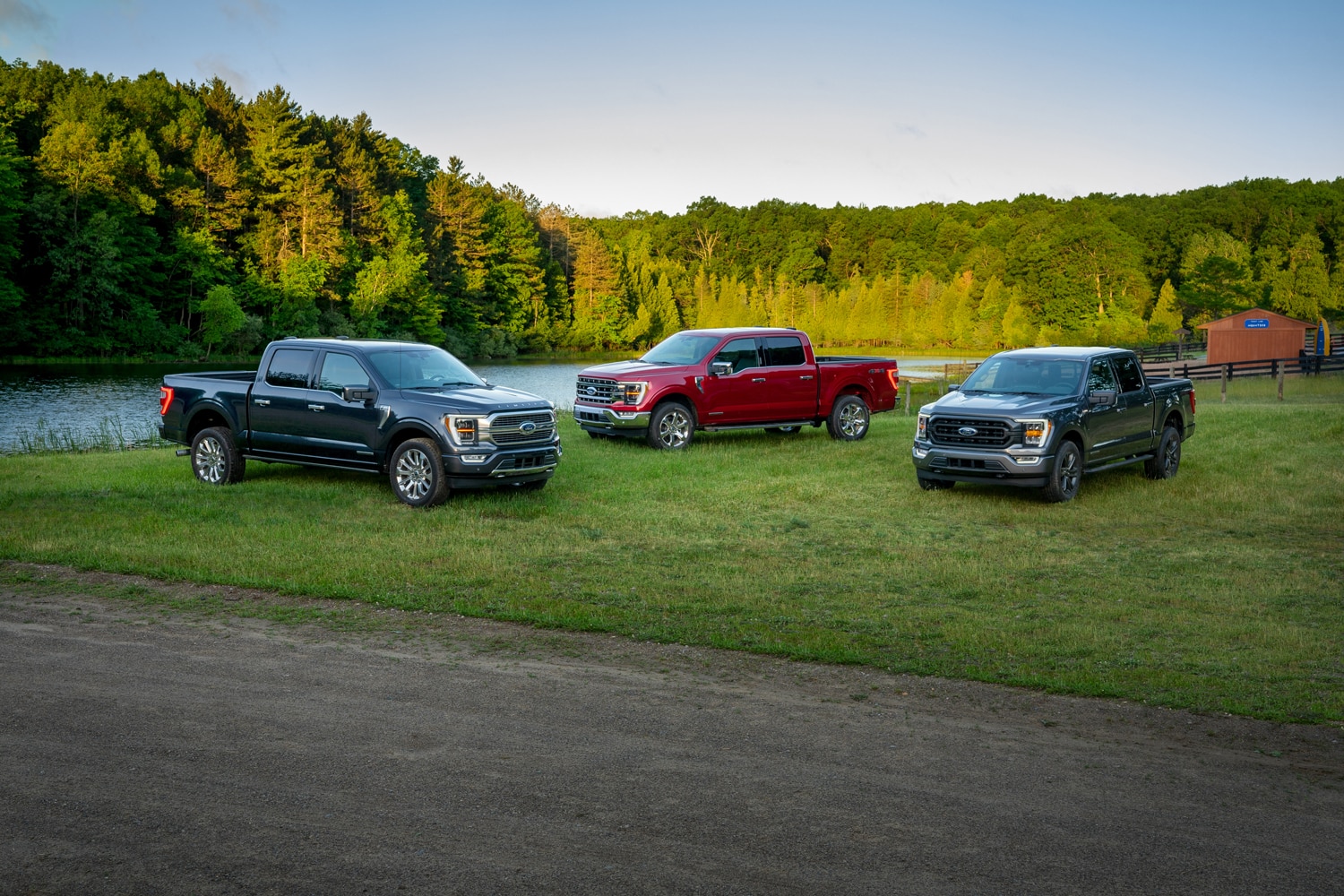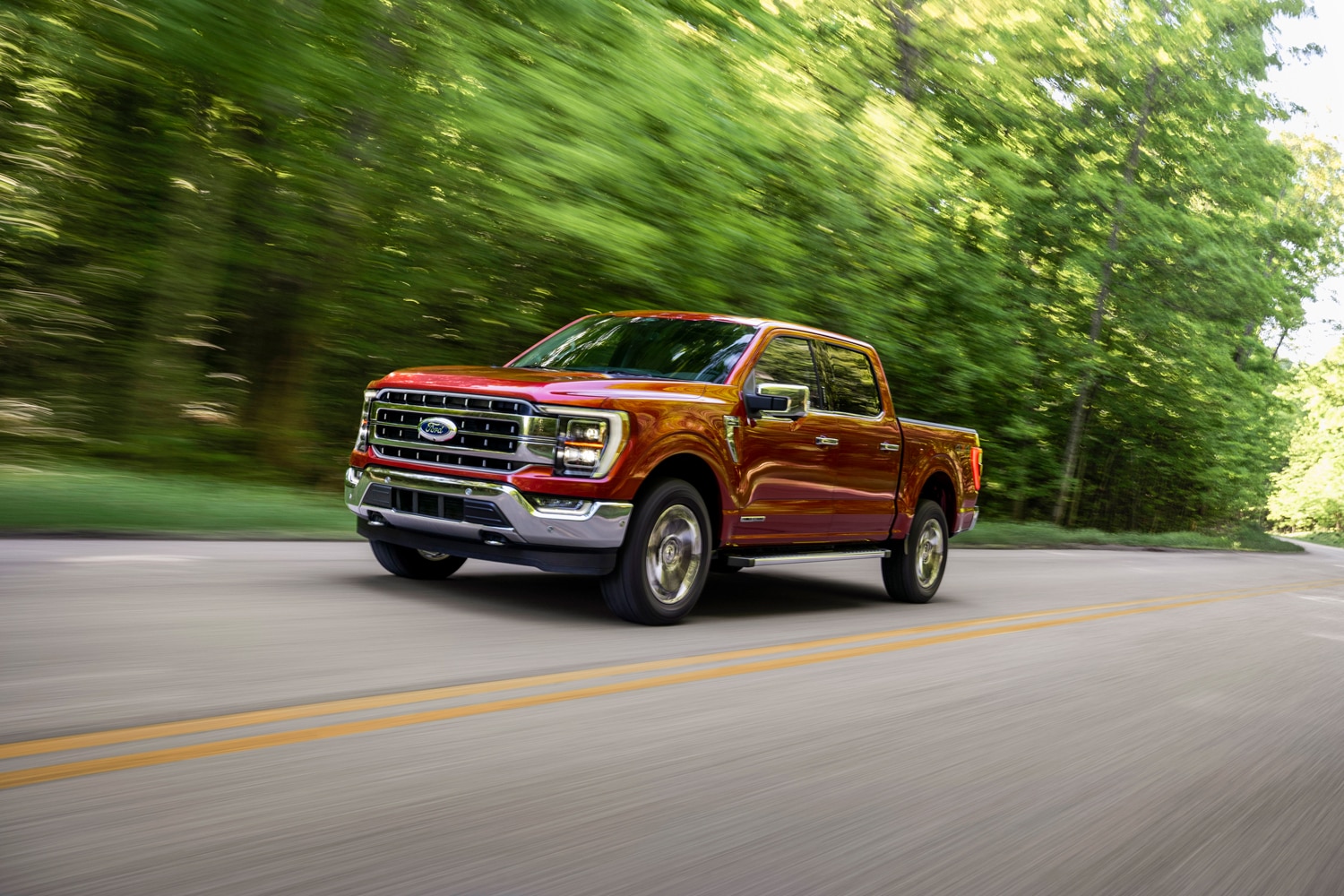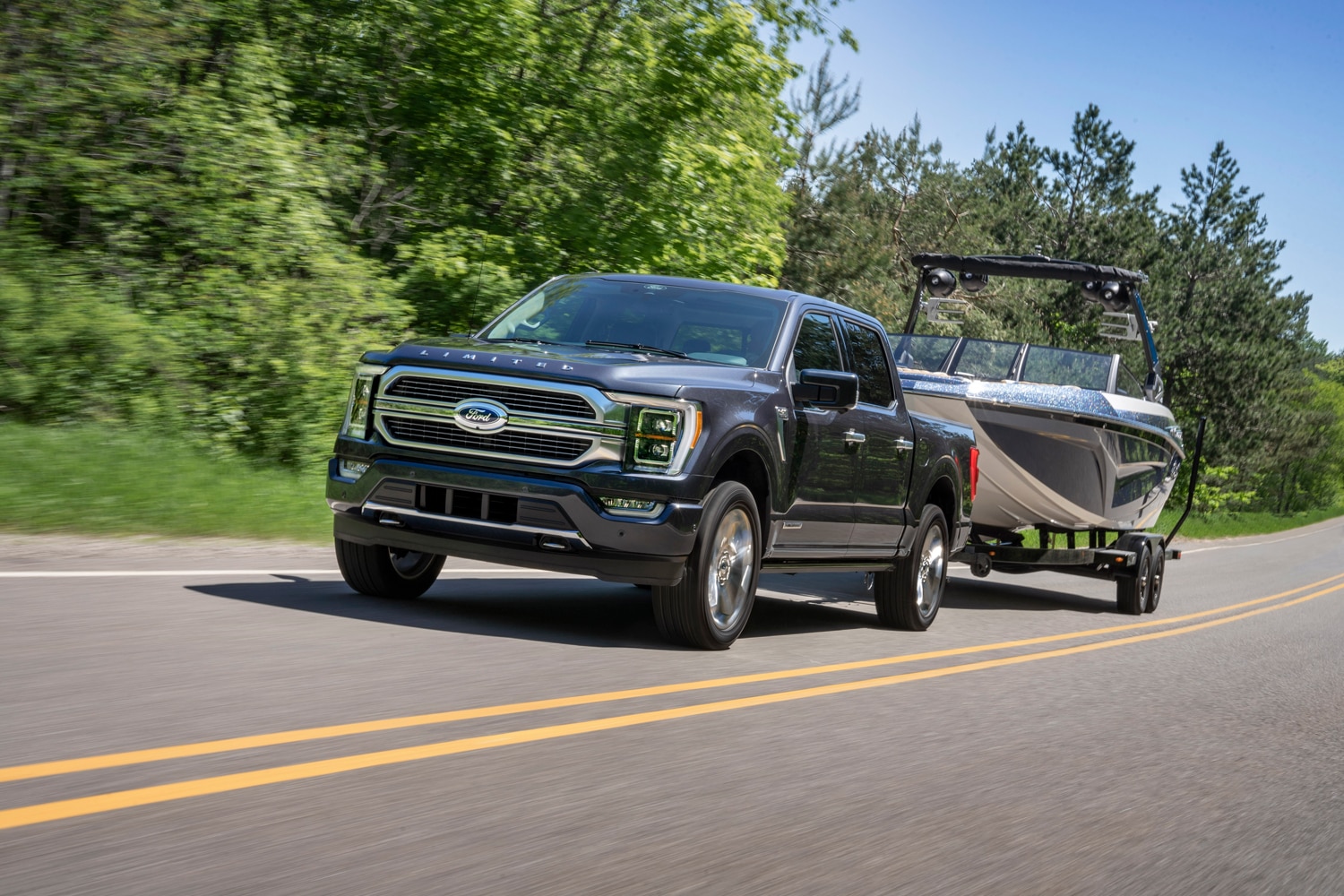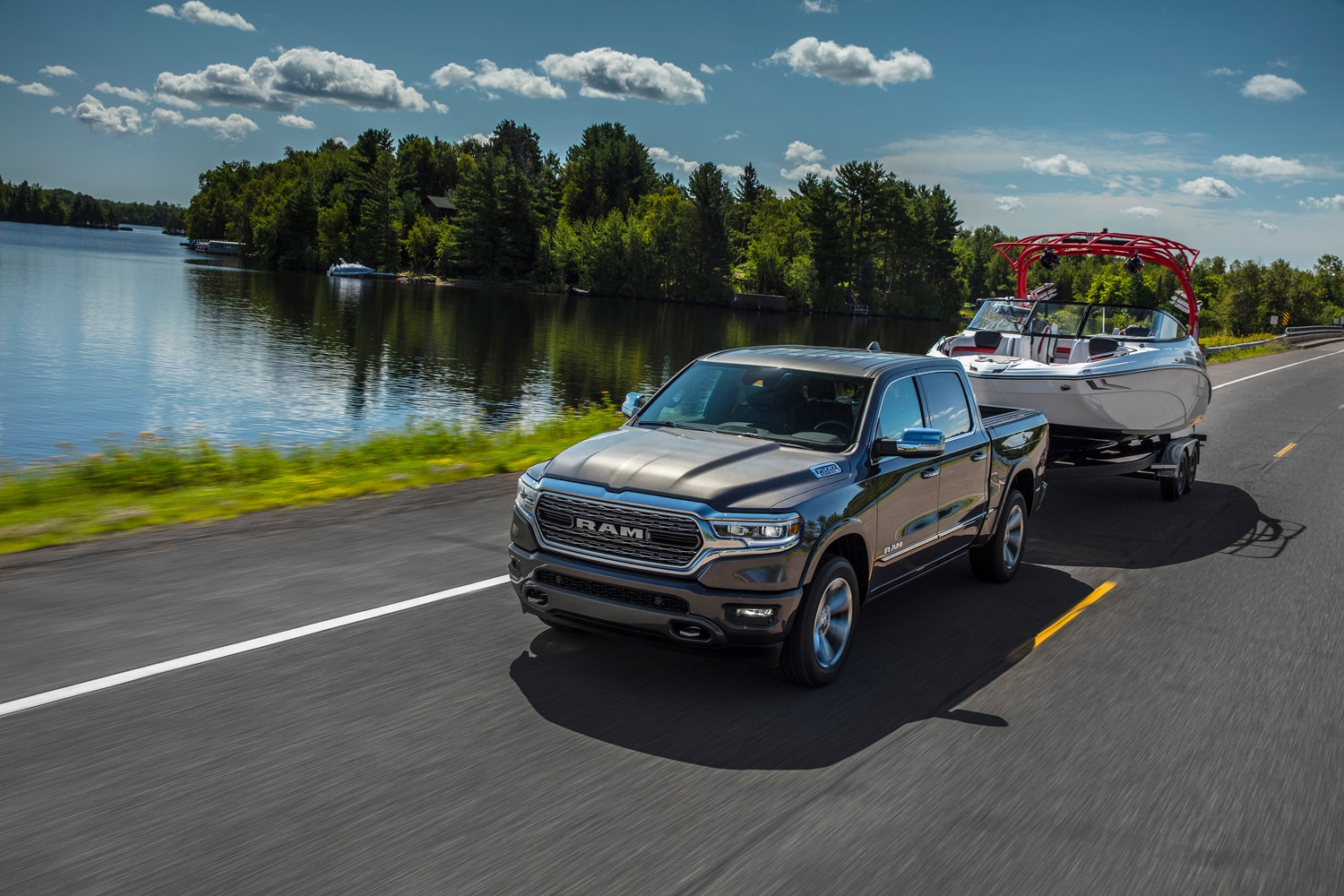Compared: Ford F-150 vs. Ram 1500
These full-size pickups were America's best-selling vehicles in 2021; here's how they compare in price, engines, and towing capacity.

Ford/Ram
QuickTakes:
In the world of vehicle sales, the Ford F-Series and Ram pickup trucks are king. Between them, nearly 1.3 million examples drove off dealership lots in 2021—during a supply-chain-disrupting pandemic, mind you. No other vehicle lines garnered as many sales.
For as many of these trucks that Ford and Ram sell each year, there are nearly as many ways to spec them. Two doors or four? Short bed or long? Rear-wheel drive or four? Six cylinders or eight? How about a diesel? Or a hybrid? Will you be doing much towing, and if so, how heavy is your trailer?
To try to simplify the calculus, we’ve compared some key specs of the half-ton models, the 2021 Ford F-150 and the 2022 Ram 1500, in both base and mid-level trims. (Note: Ram continues to sell last-gen models of this truck, known as the 1500 Classic, but the specs below reflect the newer design.) Here’s how these best sellers stack up.
 Ford
Ford
Ford F-150 vs. Ram 1500: Price
Of the two, Ford offers the lower cost of entry, with the regular-cab, six-and-a-half-foot-bed F-150 XL starting at $30,985, but Ram’s base model, called the Tradesman, doesn’t offer such a configuration. So for the sake of an apples-to-apples comparison, we’ll look at extended-cab models (i.e., those with two full-size doors ahead of two rear-hinged half-doors). Buyers can have the F-150 XL SuperCab for as low as $35,070; they’ll have to pay roughly a grand more for the comparable Ram 1500 Tradesman Quad Cab, which starts at $36,195.
 Ram
Ram
Prices in both lineups go up from there, though, and in a hurry. The F-150’s mid-level Lariat trim begins at $46,740 for a SuperCab with a six-and-a-half-foot bed. Upgrading to a four-door SuperCrew model brings the F-150 Lariat’s price up to $49,355. If you're looking for four-wheel drive, count on adding $3,425 to the SuperCab’s price and $4,635 to the SuperCrew’s. Ram’s middle-of-the-road Laramie trim comes only in four-door crew-cab form and, with the standard five-foot-seven box, opens at $49,045 (the six-foot-four box is a $300 option). Choosing the 4x4 model adds $3,500 to the equation.

Ford F-150 vs. Ram 1500: Engines
In addition to the base V-6 and optional V-8, Ford's lineup includes two excellent turbocharged six-cylinders, a soon-to-be-discontinued turbo-diesel, and a hybrid setup that delivers up to 25 mpg. A twin-turbocharged 2.7-liter V-6 producing 325 horsepower comes standard on the Lariat, which, in rear-drive form, achieves an EPA combined rating of 22 mpg. And for an additional $1,400, Ford will fit your F-150 Lariat with a twin-turbo 3.5-liter V-6, making 400 horses. A rear-wheel-drive F-150 with this engine sees 20 mpg.
 Ram
Ram
Ram provides five options for what’s under the 1500’s hood, including a diesel engine and two hybridized arrangements. The powertrain lineup begins with a 3.6-liter V-6, producing 305 horsepower. Equipped with a 48-volt motor-generator to boost fuel economy, this six-cylinder helps a rear-wheel-drive model achieve up to 23 mpg on the EPA’s combined cycle, and it comes standard on the Laramie. Upgrade to the 5.7-liter V-8—with or without eTorque hybridization—for an additional $2,295 and see output climb to 395 horses and 410 pound-feet. A rear-drive 1500 with the unelectrified Hemi makes do with 17 mpg, while the eTorque version gets 20.

Ford F-150 vs. Ram 1500: Towing Capacity
The F-150 with the base 3.3-liter V-6 can tow between 4,900 and 8,200 pounds, depending on cab configuration, bed size, axle ratio, and whether it has two- or four-wheel drive. Models with the 2.7-liter can handle at least 7,600 pounds, with some offering up to 10,100. A V-8-powered F-150 is good for between 8,200 and 13,000 pounds, while 3.5-liter trucks boast ratings between 8,200 and 14,000 pounds.
 Ram
Ram
A Ram 1500 packing the lineup’s starter 3.6-liter V-6 engine has a towing capacity between 6,290 and 7,740 pounds. The 3.0-liter diesel V-6 provides enough grunt to support a minimum rating of 7,780 pounds and, depending on the truck’s configuration, a max of 12,560. The V-8 model’s capability begins at 7,940 pounds and tops out at 12,750.
Both Ford and Ram offer camera-based driver-assistance systems that makes backing up a trailer easy, but only the Ford offers Onboard Scales, which will measure, in real time, the weight of the payload in the bed. The F-150 also has a class-exclusive Smart Hitch, which alerts you if you need to adjust the weight distribution of your trailer.
Written by humans.
Edited by humans.
 Austin Lindberg
Austin LindbergAustin Lindberg has spent the past 15 years working in journalism as a reporter and an editor covering the automotive industry, motorsports, and soccer for publications in the U.S. and the U.K. He is an EV owner with a keen interest in electrification and green tech.
Related articles
View more related articles